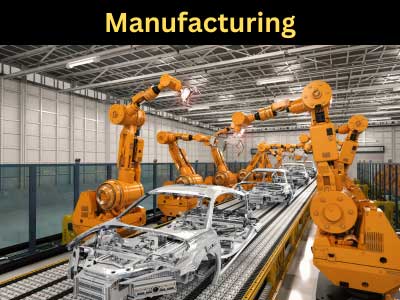Key Takeaway
Reducing downtime in manufacturing is crucial for maximizing efficiency and profitability. Start by identifying the root causes of downtime, whether they are equipment failures, process inefficiencies, or human errors. Implementing predictive maintenance technologies can help you monitor equipment health and address issues before they lead to breakdowns.
Another effective strategy is to streamline workflows and ensure that all processes are optimized for efficiency. Regular training for employees on new technologies and best practices also plays a significant role. By minimizing downtime, you can improve productivity, reduce costs, and increase overall output.
Causes of Downtime in Manufacturing Processes
Downtime in manufacturing is often caused by various factors, and understanding these causes is essential to preventing future disruptions. Equipment failure is one of the most common culprits, where machinery either breaks down completely or malfunctions due to improper maintenance or wear and tear. Human error can also lead to significant downtime, whether it’s due to mistakes during operation or inefficient work processes. Additionally, a lack of proper training and insufficient staffing can result in slower production times and stoppages.
Another factor is material shortages or supply chain interruptions, which can bring manufacturing to a halt if the necessary components aren’t available. Unscheduled maintenance or repairs can also lead to delays, while software issues, such as bugs or updates, may disrupt production lines relying on automated systems. Identifying and addressing these causes helps businesses develop a more proactive approach to managing downtime and keeping operations running smoothly.

The Role of Predictive Maintenance in Downtime Reduction
Predictive maintenance plays a vital role in reducing downtime by using data and advanced analytics to predict when machinery is likely to fail. This approach allows manufacturers to carry out maintenance tasks before a breakdown occurs, minimizing unexpected interruptions. Sensors installed on equipment can monitor conditions such as temperature, vibration, and performance metrics, sending alerts when abnormalities are detected.
By implementing predictive maintenance, companies can schedule repairs and maintenance during planned downtimes, significantly reducing the risk of sudden machinery failures. This proactive maintenance approach not only improves equipment reliability but also extends the lifespan of machines, reducing the overall cost of repairs and replacements. Predictive maintenance has become an essential tool in modern manufacturing environments, enabling companies to maximize operational efficiency and minimize costly disruptions.
Automation Solutions to Minimize Downtime
Automation is a game-changer when it comes to minimizing downtime in manufacturing. By automating repetitive and time-consuming tasks, businesses can reduce the likelihood of human error and increase the consistency of production processes. Robots and automated systems can perform these tasks more efficiently than manual labor, ensuring that production lines keep moving without unnecessary delays.
Automated quality control systems also contribute to reducing downtime by detecting defects early in the process and allowing for real-time corrections. Automated maintenance systems, integrated with predictive analytics, can monitor equipment performance and trigger maintenance tasks without human intervention, ensuring that machines operate smoothly with minimal interruption. Ultimately, automation optimizes productivity, reduces the need for manual intervention, and helps manufacturers meet production goals while minimizing the impact of downtime.
Real-Time Monitoring and Response Systems
Real-time monitoring systems provide manufacturers with critical insights into the performance of their equipment and processes. These systems use sensors and IoT technology to continuously track equipment conditions, enabling manufacturers to respond quickly to any signs of potential failure. By integrating real-time data with analytics, companies can identify trends and patterns that indicate when a machine might malfunction or when a process is slowing down.
Real-time response systems allow manufacturers to address issues as soon as they arise, often before they result in significant downtime. For example, if a sensor detects that a motor is overheating, the system can automatically shut it down or adjust the load to prevent damage. This instant feedback reduces the need for manual checks, and by keeping machines running efficiently, companies can maintain optimal production levels and avoid costly downtimes.
Best Practices for Downtime Prevention
Implementing best practices for downtime prevention is key to maintaining smooth manufacturing operations. One effective strategy is to develop a robust maintenance schedule that includes both routine inspections and predictive maintenance. Regular maintenance reduces the risk of equipment failure and ensures that machines remain in top working condition.
Employee training is another critical factor in downtime prevention. Workers who are well-trained in operating equipment and responding to potential issues can help prevent errors that lead to downtime. Having a cross-trained workforce also ensures that there are always skilled personnel available to handle different tasks, preventing slowdowns when specific employees are absent.
Standardizing processes and using data analytics to identify inefficiencies can help manufacturers streamline operations and reduce unnecessary downtime. It’s also important to maintain a strong relationship with suppliers to ensure that materials are always available when needed. By following these best practices, manufacturers can create a more efficient, reliable production environment.
Conclusion
Reducing downtime in manufacturing is critical to achieving operational efficiency and profitability. By adopting a multi-faceted approach that combines proactive maintenance, advanced automation, and real-time monitoring, manufacturers can significantly minimize disruptions in production. Predictive maintenance ensures that potential equipment failures are addressed before they cause a halt in operations, while automation reduces reliance on manual processes, streamlining workflows and improving consistency. Real-time monitoring allows for quick identification and resolution of issues, helping to keep production lines running smoothly. In addition, regular employee training and routine maintenance schedules further contribute to minimizing downtime. These strategies not only help reduce operational costs but also improve productivity, product quality, and overall competitiveness in the market. Through thoughtful implementation, manufacturers can maintain continuous, efficient production with minimal interruptions.
